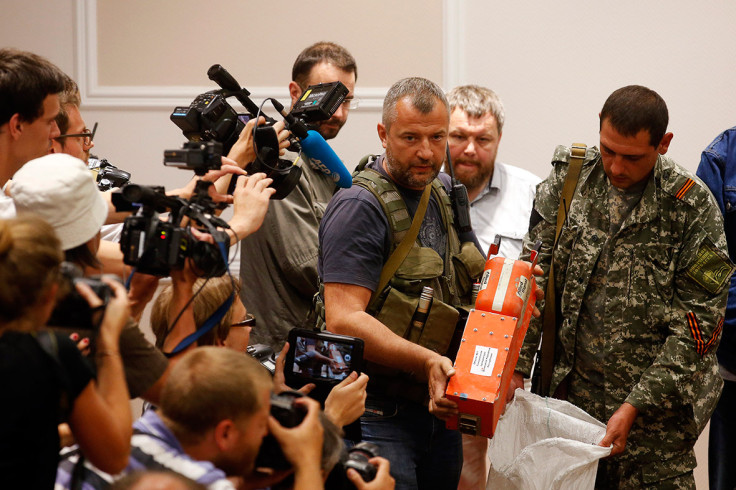Malaysia Airlines MH17: What Can a Black Box Tell Investigators?

Five days ago, Malaysia Airlines MH17 was shot down in eastern Ukraine, killing all 298 passengers and crew.
While the world's leaders have been pointing fingers at Russia and condemning the incident, the Malaysian government, headed by Prime Minister Datuk Seri Najib Tun Razak, quietly negotiated with pro-Russian separatists for the release of the bodies of the victims, safe passage for investigators to the site, and crucially, the release of the plane's black boxes.
At last the flight recorders have arrived at the British Air Accidents Investigation Branch (AAIB) in Farnborough, Hampshire – one of Europe's two "replay units" – where they will be examined by a team of international air accident experts to try to find out what exactly caused the plane to crash.
But what can the black boxes really tell us about MH17's last moments? IBTimes UK finds out.
What is a black box?
A black box refers to electronic flight data recorders and cockpit voice recorders, although sometimes both recorders can be combined onto one device.
Located in the tail of the aircraft, black boxes are painted bright orange so that they can easily be located at a crash site by investigators, and they come with an underwater locator beacon that sends out sonar pings as soon as the box is immersed in any kind of liquid.
Older black boxes record onto tape, although most have now been upgraded to store data onto solid-state drives (SSD), and the devices are very durable – able to withstand temperatures of 1,100 degrees Celsius for an hour, or a temperature of 265 degrees Celsius (a smouldering fire) for 10 hours.
The recorders are able to withstand both accidents and forceful entry, as the crucial memory boards are protected by thin layer of aluminium, topped by a 1-in thick layer of insulation and then encased in a stainless steel or titanium corrosion-resistant shell.
What information does the black box store?

The flight data recorder is able to monitor numerous different operating functions on a plane at once, such as the time, altitude, airspeed, fuel gauge, the direction the plane is heading in, plane's duration on auto-pilot, whether seat belts were on, temperatures in the passenger cabin and even how individual wing flaps moved.
The flight data recorder can keep recording continuously for 25 hours.
The cockpit voice recorder on the other hand, monitors all sounds occurring within the cockpit and everything that the crew say, whether it be talking to each other or requesting guidance from an air traffic controller.
Investigators are also able to pick up crucial sounds from the flight deck like emergency pings, engine noises or stall warnings from listening to the recording.
No guarantees
Several aviation experts that IBTimes UK spoke to who did not want to be named indicated that although the black boxes will have some information about the last moments of the ill-fated MH17 flight, the devices will not contain evidence that could be used to pinpoint blame.

For example, trying to identify from which direction the missile hit the plane would be hard as the plane was in mid-flight when it was hit, meaning that all recordings would likely have ceased from that moment in time.
Stewart John, past president of the Royal Aeronautical Society told the MailOnline: "If they had technical problems and crashed to the ground there would be parameter details, but in this case there would have just been almighty bang and everything would have switched off."
Due to this fact, it is unlikely that there would be any point in tampering with the data recorders, but Malaysia's PM Najib has promised to provide the pro-Russia separatists with a signed document proving that they did not tamper with the black boxes.
© Copyright IBTimes 2025. All rights reserved.






















